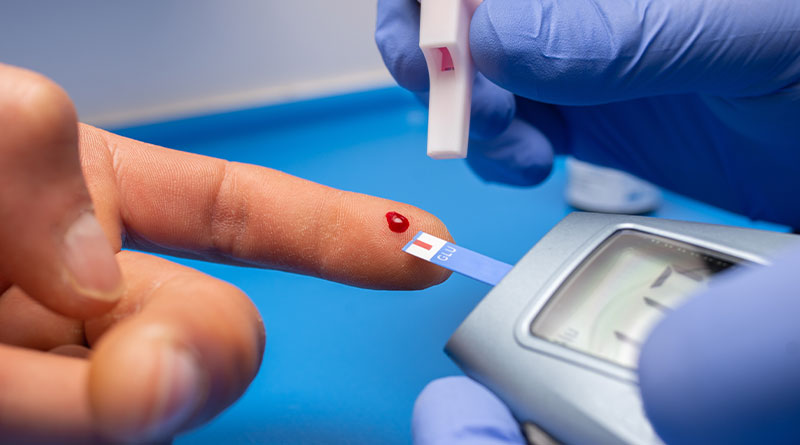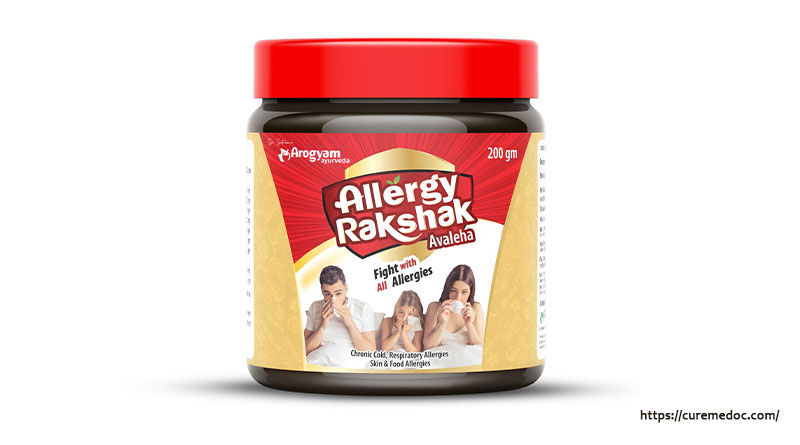Food allergies are a growing concern for many individuals and families. According to the Centers for Disease Control and Prevention (CDC), it is estimated that 1 in every 13 children in the United States has a food allergy, with that number rising in recent years. Additionally, food allergies can be severe and even life-threatening, with reactions ranging from skin rashes and digestive issues to anaphylaxis, a severe and potentially fatal reaction that can occur quickly.
With this in mind, it is important to be aware of the common food allergens and the steps that can be taken to prevent reactions. From severe reactions to minor discomfort, these allergies can have a significant impact on daily life.
Also Check: Menstrual Irregularities
To help those affected better understand this condition, this blog will explore the symptoms, causes, and treatments for food allergies.
Symptoms of Food Allergies
Food allergies can cause a range of symptoms, ranging from mild to severe. It’s important to be aware of these symptoms in order to identify and prevent an allergic reaction.
Here are some of the common symptoms of food allergies:
- Skin reactions: Hives, itching, redness, and swelling are some of the most common skin reactions caused by food allergies. These reactions can occur anywhere on the body and can range from mild to severe.
- Digestive symptoms: Nausea, vomiting, diarrhea, and abdominal pain are some of the digestive symptoms that can occur as a result of a food allergy. These symptoms can be mild or severe and may be accompanied by other symptoms.
- Respiratory symptoms: Sneezing, coughing, wheezing, and shortness of breath are some of the respiratory symptoms that can be caused by food allergies. These symptoms can be mild or severe and can quickly escalate into a life-threatening reaction.
- Anaphylaxis: Anaphylaxis is a severe and potentially life-threatening reaction that can occur quickly. Symptoms may include difficulty breathing, rapid heartbeat, and dizziness or fainting. Anaphylaxis can be triggered by a food allergy, and it is important to seek medical attention immediately if this reaction occurs.
- Swelling: Swelling of the face, lips, tongue, and throat is a common symptom of food allergies. This type of reaction can be severe and can quickly escalate into anaphylaxis.
- Itchy or tingling mouth: An itchy or tingling sensation in the mouth is a common early symptom of a food allergy. This sensation may be accompanied by other symptoms such as itching or hives.
- Runny nose and eyes: A runny nose and eyes can occur as a result of a food allergy. These symptoms may be accompanied by other symptoms such as sneezing, coughing, and itchy eyes.
Causes of Food Allergies
Food allergies occur when the body’s immune system mistakenly reacts to a food protein as if it were harmful. The exact cause of food allergies is not well understood, but there are several factors that may contribute to their development, including genetics, the environment, and a person’s overall health.
Some of the common causes of food allergies include:
Genetics
Genetics plays a role in the development of food allergies. If a person has a family history of allergies or other allergic conditions, they may have an increased risk of developing a food allergy. This suggests that there is a genetic component to the development of food allergies. Studies have shown that certain genes are associated with an increased risk of developing food allergies, but more research is needed to fully understand the genetic basis of food allergies.
Also Check: Trust Issues
It is important to note that genetics is just one factor that may contribute to the development of food allergies, and other factors such as environment, exposure to allergens, and overall health also play a role.
If you have a family history of food allergies, it is important to speak with a healthcare professional to determine your individual risk and how to best manage and prevent reactions.
Early Exposure to Allergens
Early exposure to certain food allergens, such as peanuts or eggs, may increase the risk of developing a food allergy. This can occur through a variety of mechanisms, including exposure during pregnancy, breastfeeding, or early childhood.
Studies have shown that early exposure to certain allergens can alter the development of the immune system and increase the risk of developing food allergies. For example, in some cases, early exposure to peanuts may increase the likelihood that a child will develop a peanut allergy.
Age
Food allergies are more common in children but can occur at any age. Children with a family history of allergies or other allergic conditions are at a higher risk of developing food allergies. In some cases, children may outgrow their food allergies as they get older, but in other cases, food allergies can persist into adulthood.
It is also possible for adults to develop new-onset food allergies in their later years. This can occur for a variety of reasons, including changes in the immune system or exposure to new allergens.
Regardless of age, it is important to be aware of the signs and symptoms of food allergies and to seek medical attention if you experience a reaction.
Environmental Factors
Environmental factors, such as pollution and household chemicals, may increase the risk of developing a food allergy. Exposure to these factors can weaken the immune system, making it more likely to react to food proteins.
Studies have shown that exposure to pollution, such as air pollution, can increase the risk of developing food allergies. Additionally, exposure to household chemicals, such as cleaning products, can also increase the risk of developing food allergies.
It is important to be mindful of your exposure to environmental factors and to take steps to reduce your risk of developing food allergies. This may include using natural and environmentally-friendly products in the home and taking steps to reduce your exposure to air pollution.
Chronic Inflammation
Chronic inflammation is a long-term, low-grade state of inflammation that can occur in response to various stimuli, such as stress, poor diet, and exposure to toxins. This persistent inflammation can have a negative impact on the body and increase the risk of developing food allergies and other health problems.
When the body is exposed to an allergen or other irritant, the immune system responds by releasing inflammation-promoting chemicals. This is a normal and healthy response that helps the body fight off harmful substances. However, when the immune system is constantly activated by chronic inflammation, it can lead to a breakdown in the body’s ability to regulate inflammation and increase the risk of developing food allergies.
Also Check: All You Know About Anxiety
Chronic inflammation can also weaken the immune system and make it more susceptible to other health problems, such as autoimmune disorders, heart disease, and certain types of cancer. To reduce the risk of chronic inflammation and the development of food allergies, it is important to adopt a healthy lifestyle that includes a balanced diet, regular physical activity, and stress management techniques.
Diagnosis of Food Allergies

The diagnosis of food allergies involves a thorough evaluation of a person’s medical history, symptoms, and possible exposure to allergens. A healthcare professional may use one or more of the following tests to diagnose a food allergy:
- Skin Prick Test: In this test, a small amount of the suspected allergen is placed on the skin, and the skin is then pricked. If a red, raised bump appears at the site of the allergen, it may indicate an allergy.
- Blood Test: In this test, a blood sample is taken and tested for the presence of specific antibodies to the suspected allergen. High levels of antibodies can indicate an allergy.
- Oral Food Challenge: In this test, the person is given increasing amounts of the suspected allergen to consume, under the supervision of a healthcare professional. If symptoms occur, it may indicate an allergy.
- Elimination Diet: In this test, the person eliminates the suspected allergen from their diet and then reintroduces it to see if symptoms occur.
- Patch Test: In this test, a patch containing the suspected allergen is placed on the skin and left in place for 48 hours. The skin is then evaluated for any signs of an allergic reaction.
- Food-Specific IgE Test: In this test, a blood sample is taken and tested for the presence of IgE antibodies specific to a certain food allergen. High levels of these antibodies can indicate an allergy.
- Combined Prick and Patch Test: This test combines a skin prick test with a patch test to evaluate the skin’s reaction to a suspected allergen.
- Atopy Patch Test: In this test, a patch containing a mixture of several common allergens is placed on the skin and evaluated for any signs of an allergic reaction. This test can help identify multiple food allergies and provide a comprehensive understanding of a person’s allergic reactions.
Treatment of Food Allergies
The most effective way to treat a food allergy is to avoid the allergen altogether. This may involve reading food labels, avoiding certain ingredients or dishes, and carefully considering the source of the food. In some cases, a person may need to carry emergency medications, such as an epinephrine auto-injector, to use in the event of a severe allergic reaction.
Also Check: Potential Causes of Low Libido
Other treatments for food allergies may include:
- Allergen-Specific Immunotherapy (ASIT)
- Anti-Histamines
- Corticosteroids
- Epinephrine
- Probiotics
- Vitamin D
- Omega-3 fatty acids
- Diet changes
It is extremely important to consult with a healthcare professional before trying any new treatment or making significant changes to a current treatment plan for food allergies.
A doctor or allergist can help diagnose the condition and recommend the most appropriate course of action based on a person’s individual needs and medical history. They can also help monitor the progress of treatment and make any necessary adjustments to ensure the best outcome.
Self-diagnosing or self-treating a food allergy can be dangerous and may lead to further complications, so it is always best to seek professional medical advice.
Conclusion
Living with food allergies can be challenging, but with the right support and resources, it is possible to manage the condition effectively. From understanding the symptoms and causes to seek accurate diagnosis and treatment, it is crucial to take an active role in managing food allergies.
If you or a loved one are living with food allergies, don’t hesitate to reach out to your doctor for guidance and support. Together, you can create a plan to help manage this condition and improve your overall quality of life.
FAQs
Q: How can I determine if I have a food allergy?
Ans: The only way to definitively diagnose a food allergy is to see a healthcare professional. They will ask about your symptoms, medical history, and possible exposure to allergens and may perform one or more tests, such as a skin prick test, blood test, oral food challenge, or elimination diet.
Q: What are the most common food allergens?
Ans: The most common food allergens include peanuts, tree nuts, fish, shellfish, cow’s milk, eggs, wheat, and soy.
Also Check: Treatments for Migraine
Q: Can food allergies develop at any age?
Ans: Yes, food allergies can develop at any age, although they are more common in children.
Q: Is there a cure for food allergies?
Ans: Currently, there is no cure for food allergies. However, the best way to manage food allergies is to avoid the allergen and be prepared for accidental exposure by carrying medications such as an epinephrine auto-injector.
Q: Can food allergies go away on their own?
Ans: Some children may outgrow their food allergies, but this is not always the case. In some cases, food allergies can persist into adulthood and even worsen over time. It is important to speak with a healthcare professional to determine the best course of action for managing your food allergies.
Q: How do I avoid food allergens?
Ans: To avoid food allergens, it is important to read food labels carefully and to be aware of the ingredients in the foods you eat. You may also need to avoid certain foods and restaurants that are known to prepare foods with allergens. Additionally, you should carry medications such as an epinephrine auto-injector in case of accidental exposure.
Q: What should I do if I have a severe allergic reaction to food?
Ans: If you experience a severe allergic reaction to food, such as difficulty breathing or swelling of the face and lips, you should seek emergency medical treatment immediately. If you have been diagnosed with a food allergy, you should also carry an epinephrine auto-injector with you at all times. Using the auto-injector can help reduce the severity of symptoms and prevent a life-threatening reaction.
Sahil Sachdeva is the Founder of curemedoc.com and a Digital Marketing professional with years of experience. If you need help in Content writing and want to increase your website ranking, connect with him, as he has some premium websites where you can share blogs with DoFollow links and increase your website’s ranking on Google.





